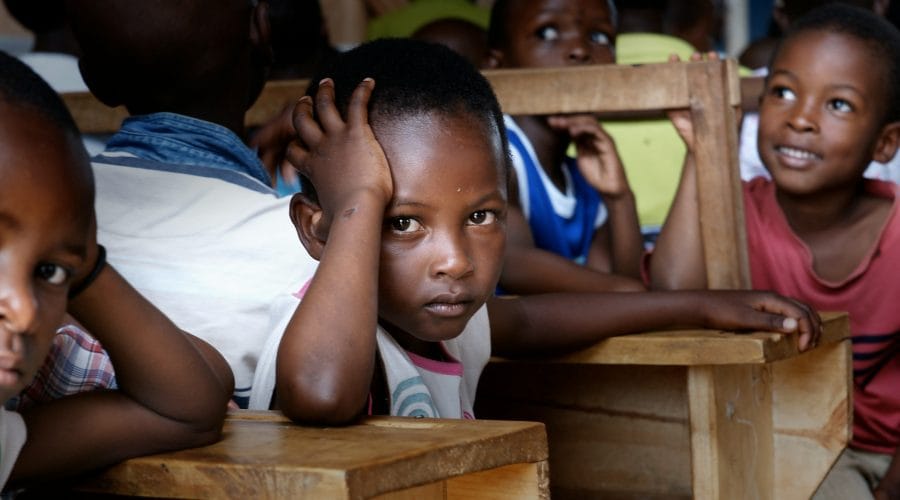New research shows that iron from supplements and fortified foods is well-absorbed in children living with virally suppressed HIV, and that administering iron supplements with prebiotics may enhance their effectiveness and improve their safety.

Drawing on findings from three complementary studies conducted in South Africa, the work provides the most comprehensive analysis to date of iron metabolism in children living with virally suppressed HIV. The findings, published today in Nature Communications, provide a strong evidence base to guide recommendations and policies for preventing and managing iron deficiency in paediatric HIV.
Addressing key knowledge gaps
Iron deficiency anaemia is common in children living with HIV and is associated with poorer health outcomes and higher mortality. While iron supplementation is recommended to prevent and treat iron deficiency in children without HIV, there is uncertainty about whether HIV-related inflammation may limit iron absorption. This could leave more unabsorbed iron in the gut, which may disrupt the gut microbiome and increase the risk of other infections, especially in places with much infectious disease.
To address key knowledge gaps and explore new approaches to iron intervention, researchers from King’s College London, Stellenbosch University, ETH Zurich, and the University of Oxford conducted three studies examining iron absorption, losses, and responses to current iron interventions in children with virally suppressed HIV and iron deficiency.
The first study compared iron absorption from a fortified food (iron-fortified maize porridge) and supplements between 43 children with and 45 children without HIV. The iron in the food and supplements was labelled with a harmless iron tracer, allowing the team to accurately measure how much iron was absorbed and used to make red blood cells. The results showed that iron-deficient children with virally suppressed HIV absorbed iron from these sources just as effectively as children without HIV, suggesting that these interventions are effective strategies to prevent and treat iron deficiency in children with virally suppressed HIV.
The second study tracked how much iron children absorbed from their normal diets over six months, in 29 children with HIV and 36 without HIV. The researchers used a new method to measure how the iron tracer in the body mixed with iron from food over time, revealing how much iron children absorbed from their everyday diets. They found that those living with HIV absorbed 24% less iron from their diets than children without HIV, even though their natural iron losses were similar. The lower absorption is likely due to the higher levels of inflammation and poorer diet quality observed, the authors say, suggesting that iron intake from everyday diets may not meet the needs in this population.
Prebiotic increases iron absorption
The third study evaluated oral iron supplementation in iron-deficient children with HIV administered with a prebiotic called galacto-oligosaccharides or GOS (in 41 children), and without GOS (in 42 children) for 12 weeks. Children with virally suppressed HIV who received 50 mg of oral iron daily with GOS showed a 39% greater relative increase in serum ferritin, a biomarker of iron stores in the body, and a significantly lower incidence of fever and colds compared with those receiving iron with placebo. Supplementation with and without GOS affected neither gut inflammation nor numbers of harmful gut bacteria in stool samples.
Overall, our findings suggest that iron-depleted children with virally suppressed HIV absorb iron from fortified foods and supplements as effectively as children without HIV, giving us confidence that these interventions can be effective in preventing and managing iron deficiency in this population.
Dr Jeannine Baumgartner, Senior Lecturer in Nutritional Sciences at King’s and lead author of the study.
Anaemia caused by iron deficiency is a strong predictor of poorer outcomes in children with HIV, yet there is uncertainty around how iron deficiency should be treated and whether existing interventions are effective and safe in this vulnerable population group. It’s really positive to see these results.
Professor Mark Cotton, Emeritus Professor in Paediatrics at Stellenbosch University and co-author of the study.
Previous studies in African children have raised concerns that iron supplementation can increase the risk of respiratory and gastrointestinal infections, particularly in settings with high infectious disease burdens. Our findings suggest that combining iron with prebiotics, specifically galacto-oligosaccharides, may offer a promising strategy to improve the safety of iron supplementation in children with HIV by supporting gut health and reducing infection-related symptoms.
Professor Michael B. Zimmermann, Professor of Human Nutrition at the University of Oxford and Principal Investigator of the project.
These findings could help shape safer, more effective nutrition strategies for children with HIV and potentially for other conditions where inflammation and gut health affects how the body absorbs and uses iron.
Building on this work, Dr Baumgartner and her research team are planning to explore how inflammation influences iron metabolism in other paediatric conditions, such as cystic fibrosis, inflammatory bowel disease, and obesity.
Read the paper in Nature Communications.
Source : King’s College London
Related HIV and Co-Infections News
Get involved
Are you living with HIV/AIDS? Are you part of a community affected by HIV/AIDS and co-infections? Do you work or volunteer in the field? Are you motivated by our cause and interested to support our work?
Subscribe
Stay in the loop and get all the important EATG updates in your inbox with the EATG newsletter. The HIV & co-infections bulletin is your source of handpicked news from the field arriving regularly to your inbox.
